I came, I saw, I set up a fair experiment controlling all of the variables and making systematic observations and recordings.
Didn’t the Romans pinch all of their science from the Greeks? Well perhaps. But I tend to think of the Romans as the ‘doers’ of the Ancient world; while the Greeks may have come up with the scientific theories, it was the Romans who put those ideas to practical use.
No matter what aspect of the Romans you teach, you can expect this sort of cross-cultural merging of ideas. But since they conquered half the known world we can forgive them for that! And whoever you wish to attribute the scientific kudos to, the discoveries of the Roman age provide teachers with plenty of fodder for getting practical in the primary classroom.
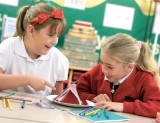 The fabulous ruins of Pompeii and Herculaneum have given archaeologists a wealth of information about everyday Roman life preserved in the layers of volcanic ash. We can use this as an introduction to an investigation about rocks, soils and, of course, volcanoes!
The fabulous ruins of Pompeii and Herculaneum have given archaeologists a wealth of information about everyday Roman life preserved in the layers of volcanic ash. We can use this as an introduction to an investigation about rocks, soils and, of course, volcanoes!
Most of us are familiar with the spectacular ‘volcanic’ reaction we can achieve by mixing together bicarbonate of soda with vinegar, but did you know you can create an amazing model volcano using jelly and cream?
Make up your regular jelly mix to about double strength by halving the volume of water recommended to produce a much firmer jelly. Make your volcano mould by using a funnel; seal it with blu tac or clay at the nozzle end and insert a plastic straw into this seal; this will create a space in the body of your jelly volcano for the main vent. Steady the mould in a jug or bottle and carefully pour in your mixture. Leave it in the fridge to set.
Thar she blows!
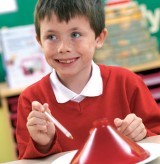 Before turning the set jelly out you need to prepare a paper plate with a straw sized hole cut into the centre. Carefully place the hole in the plate over the straw that’s sticking out of your volcano and tip everything upside down to unmold it. Slowly withdraw the straw and you should be left with a jelly volcano with the vent placed exactly over the hole in your plate. Phew!
Before turning the set jelly out you need to prepare a paper plate with a straw sized hole cut into the centre. Carefully place the hole in the plate over the straw that’s sticking out of your volcano and tip everything upside down to unmold it. Slowly withdraw the straw and you should be left with a jelly volcano with the vent placed exactly over the hole in your plate. Phew!
Now for the magma. You’ll need a blunt ended syringe filled with single cream. Insert this into your volcano through the bottom of the plate and squeeze. Not only will the cream erupt through the main vent but you should also see that the force creates side vents and fissures throughout the cone just as in a real volcano. Experiment with the force used to inject the cream; do you notice different patterns of lava flow when the cream is introduced gently? And the best thing is that when your investigation is over you can eat your experiment!
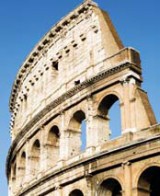 Volcanoes weren’t all bad news for the Romans. An important Roman discovery was that by adding volcanic ash to lime mortar they could increase the strength of the resulting concrete by up the eight times. The development of concrete transformed Roman architecture and made possible the spectacular buildings that we still see today.
Volcanoes weren’t all bad news for the Romans. An important Roman discovery was that by adding volcanic ash to lime mortar they could increase the strength of the resulting concrete by up the eight times. The development of concrete transformed Roman architecture and made possible the spectacular buildings that we still see today.
Investigating the materials used to build the stunning Pantheon in Rome is a great way to kick off a study of the properties of rocks. Pumice, the frothy, floating volcanic rock, was mixed with the concrete at the top of the dome of the Pantheon to make it lighter and less prone to collapse; basalt, another volcanic rock, was used at the bottom as it was heavier. You can take a virtual tour of the Pantheon at http://www.italyguides.it/us/roma/pantheon.htm – how many different rocks can you spot?
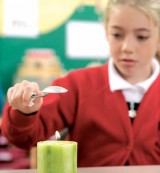 Investigating the two main methods of Roman writing and recording makes a fun introduction to changing materials.
Investigating the two main methods of Roman writing and recording makes a fun introduction to changing materials.
Beeswax writing tablets were a reusable way of recording. Letters scratched into the wax could be smoothed out and re-written many times. It is the property of the wax that allows us to do this and children can see this for themselves by making their own tablets.
Make a shallow tray from balsa wood and seal the joins with modelling clay. By melting beeswax in a warm oven or on a hob we can see that it has changed state from solid to liquid and can now be poured into our tray. Away from the heat the wax will set and become a solid once again. Now we can scratch into it with a hard stylus and write.
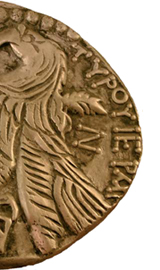 Romans also used carbon ink made from powdered soot, vinegar and gum arabic (you can get this from an art shop) to write on papyrus, parchment or wood.
Romans also used carbon ink made from powdered soot, vinegar and gum arabic (you can get this from an art shop) to write on papyrus, parchment or wood.
Set a candle burning and challenge the children to name the changes of state they can observe. One of the products of this combustion is soot or carbon, which you can capture by (carefully!) holding a metal spoon, convex side down, above the flame. Mixed to a recipe of 5 parts soot to 2 parts gum and 4 parts vinegar, the Romans would write with this using a quill pen. Gathering soot in this way does take a lot of time so you can experiment with ground up sticks of charcoal as an alternative.
Try using runny honey, water or egg white as a medium for the ink too. Which works best? What are the best proportions? Use this as a way of challenging the children to be systematic in their measurements and recording of science.
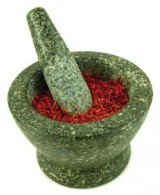 Tyrian purple (originally from Tyr in Phoenicia) was a hugely expensive dye made from the shell of the murex sea snail. It took 1200 shells to make 1 gram of dye and so it was highly prized by the Romans. While purple may have been reserved for the imperial classes, Roman textile workers used a variety of natural materials to colour cloth, and so can we. Children can experiment with various concoctions inexpensively using simple white paper towels to take the colour before trying out their favourites on fabric.
Tyrian purple (originally from Tyr in Phoenicia) was a hugely expensive dye made from the shell of the murex sea snail. It took 1200 shells to make 1 gram of dye and so it was highly prized by the Romans. While purple may have been reserved for the imperial classes, Roman textile workers used a variety of natural materials to colour cloth, and so can we. Children can experiment with various concoctions inexpensively using simple white paper towels to take the colour before trying out their favourites on fabric.
Chopped up red cabbage steeped in hot water for about 20 minutes yields a vibrant purple solution, it is also a natural indicator so if you add an acid such as vinegar or lemon juice to the dye it will turn pink; add an alkali such as bicarbonate of soda or powdered soap and it will turn a bright green.
Boiled up onion skins will give you a golden yellow, pine cones an orange colour and saffron gives brilliant yellow. Try using turmeric which is also an indicator – add an alkali and dark yellow turns red!
Other things to try that would have been around in Roman times are boiled up nettles (lime green), spinach, you can use the fresh or frozen sort (pale green), crushed elderberries (pale lilac) and blackberries which give a dark pink/purple colour.
Investigate how much of each substance is needed to give the strongest colours. Can we mix these dyes to give other colours?
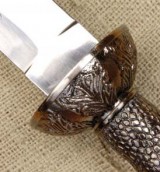 Enter the spirit of roman invention
Enter the spirit of roman invention
You might already use Ancient Rome as a way to teach children about arches and bridges, but have you tried this? Follow the author of De Rebus Bellicis (a book about Roman warfare) who suggests building an inflatable bridge using animal skins – what would the children use? How could we test this in the classroom? How about investigating catapults or waterwheels, both inventions improved on by the Romans. The possibilities for investigation abound but the important thing is to enjoy the process of finding out.
What have the romans ever done for us?
Reinforced concrete
Which revolutionized building techniques enabling the Romans to build the first high rise apartment blocks or insulae
Central heating
Hypocausts provided under floor heating and flues channelled hot air into upper rooms.
Double glazing
It wasn’t until the 1970s that this Roman invention became popular in modern houses, letting the light in but keeping the heat from escaping.
Flushing toilets
Communal toilets flushed with recycled water from the public baths. Unfortunately the Romans didn’t manage to invent toilet paper so had to make do with a sponge on the end of a stick.
Plumbing
From plumbus meaning lead in Latin from which they made water pipes.
Sports arenas
‘Panem et circenses’ or ‘bread and circuses’ was a satire written by the poet Juvenal about the route to political popularity. Few cities today are without stadia and many still reflect Roman design.
Cosmetic surgery
Can you believe the Roman surgeons did eye lift operations? Amazingly, Roman surgical instruments are almost identical to those we use today.
Names of the planets
From little Mercury the messenger to mighty Jupiter, King of the gods
Latin
Which scientists use to name and classify all living things by genus and species
The months of July and August
Where would the summer holidays be without them!?
Oh, and of course we shouldn’t forget fast food, fire brigades, the bikini, milestones, aqueducts, pivoted scissors, staircases, locks with keys, different shoe shapes for left and right feet, public street lighting, edible (just!) candles, the professional army, and daily newspapers.
How children react to a moral dilemma may be down to your teaching
Ace-Classroom-Support
KS2 Lesson plan: China and Buddism
Ace-English
Use the bottle-flipping craze to create good school behaviour, not bad
Behaviour Management
